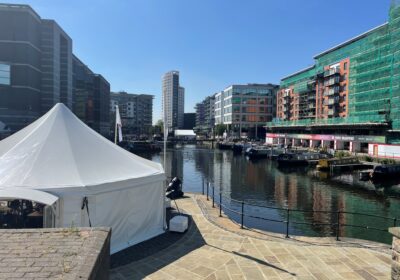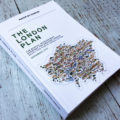Last night, I joined a Thinkin at Tortoise media to discuss whether the younger generation in the UK will ever own a home. The subject is topical as this very month, the UK Government has announced that the number of first time buyers reached a 12-year high in August 2019.
The Government press rooms have been busy banging the drum. MHCLG has recently launched a new national model for shared ownership which will reduce the amount of equity required to ‘staircase’ and published research highlighting that the vast majority of the population still prefer to own rather than rent.
At MIPIM UK, which I attended earlier in the week, the vein of optimism continued. New Housing Minister Esther McVey restated the Government’s commitment to extending home ownership through boosting house building
There are green shoots. At Pocket Living, where I work, we now have over 1,500 affordable for sale homes in either planning or construction. With a registration list of over 35,000 Londoners – the market for getting on that first rung of the ladder is healthy despite the ongoing national political drama.
Yet there are big problems. Despite the ‘record month’, millennials will continue to suffer from homeownership rates which are half those enjoyed by the so call generation X. Pocket and other providers of affordable homes for sale or rent barely make the inroads required to house millennials.
The bad news
Listening to the Government and you would think if we could get a few more diggers in the ground, the problem will be solved. Unfortunately, this is plain wrong. Councils and developers could do more, but alone it’s not enough.
The real problem this country has is not how we produce new space, but how we use existing space. In 1931, there was an average of 4.2 people for every dwelling. Today, its 2.3 people. We have plenty of homes in this country.
The housing crisis is a result of how we as a nation choose to use those homes. As highlighted by Danny Dorling in his work around inequality, the top ten percent of the nation enjoy 5 time as many rooms per head as the bottom ten percent. Furthermore, 11.2 percent of the population own multiple properties.
We’re a nation of serial under occupiers. We treat homes like investments and nest eggs. Cracking this is not easy. We’ve allowed the entitlement to go on too long.
Austerity and housing
The previous Government’s policy of austerity has made the situation worse. Housing benefit reform has resulted in taking existing housing capacity out of the system at the lower end of the market. Landlords who had previously been happy to let homes to social tenants switched to the private rental market once the housing benefit cap came into force.
The numbers in temporary accommodation now stand at 78,000. This has been a disaster for local councils in urban areas who have had to find emergency accommodation.
One of the side effects is an increasingly febrile planning environment as local authorities scramble to make sense of the acute housing needs they have a duty to manage. House builders are increasingly under pressure to deliver more affordable homes but with little support and no reform of the planning system to support them.
House building for millennials
This of course doesn’t mean that the new build sector doesn’t have a role to play. There are plenty of measures which are desperately needed.
As a nation, we should be resourcing planning departments properly and committing local authority planning committees to only dealing with truly major applications in their areas. Most young people are puzzled by our antiquated system of local government where even conservatory extensions are politicised.
Moreover, planning rules should be lifted from small sites (anything under 50 homes) from the burden of complex tenure rules. We need to reform the planning gain system and viability process which is now a complete mess.
All these things will help, but I’m afraid it won’t mean enough new homes at the affordable end of the spectrum capable of meeting the demand any time soon. From a practical perspective, the industry is not there to step up the volumes. Furthermore, there is little sign that the national political parties even consider these ideas realistic political options.
Housing as an election issue
The 2017 election heralded a new trend. It was the day of the private renter. For the first time they came out in force, and they came for Labour. The dissatisfaction felt by much of the public concerning the current and previous governments is palpable and much of it is to do with a lack of affordable housing options.
The Coalition Government blunders in retrospect are considerable. An austerity programme which squeezed the poor. Too little, too late on tax reform to manage housing wealth at the top. Planning reforms which missed the fundamental problems with the system and only added to its complexity. The net result: even less efficiency in how we use existing space and bring forward new space and a politically toxic environment to operate within.
There’s much to be done, and much that can be done to put the country’s housing stock back onto a healthy footing. The danger is that with the increasing tacking to the hard left and far right, we double down on the mistakes of the last ten years rather than address them head on.
For those wishing to get on the ladder, David Willetts my fellow panelist last night put it well: we can’t solve the problem instantly, but if we can combine tax reform, welfare reform and house building, we can turn the tanker and give young people a reason to be hopeful.








